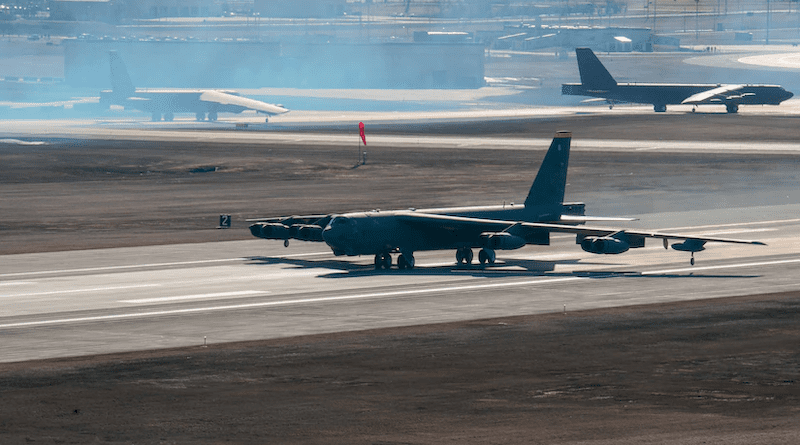US General Says Deterring Two ‘Near Peer’ Competitors Is Complex
By DoD News
By Jim Garamone
U.S. Strategic Command is focusing on extended deterrence during a time when the country faces two near-peer rivals, said Air Force Gen. Anthony J. Cotton Wednesday. The command continually assesses the threats and examines the command “for sizing and the right force posture to meet the challenges which we would face,” he said during U.S. Strategic Command’s Deterrence Symposium in Omaha, Nebraska.
Russia has long been a near-peer competitor to the United States, with around 5,900 nuclear weapons in manned bombers, intercontinental missiles and submarine-launched platforms.
China today has around 350-400 nuclear weapons, and Chinese leaders have announced a program to have more than 1,000 nuclear weapons by 2030. Cotton said officials at U.S. Strategic Command take this development seriously. “What we assess and what we look at day-in and day-out is where are [the Chinese] on their readiness? Where are they on the total number of forces?” he said.
In February, Cotton notified Congress that China’s ground-based systems — which include road-mobile and silo-based weapons — “actually exceed the numbers that we have. We’re not seeing any indication that they’re slowing down,” he said.
China is also developing a nuclear triad. Cotton said Chinese H-6N nuclear/conventional bombers “are air-to-air refuelable, and they’re practicing air-to-air refueling.”
China’s navy has nuclear-armed submarines that are “a full-fledged submarine leg” of the triad, the general said.
The Chinese also have a mix of mobile and fixed intercontinental missiles.
“That’s why, in my opening statement this morning [at the symposium], I said as commander of Strategic Command I am now dealing with two near-peer competitors,” he said.
Deterrence of two near-peers is a complicated process, Cotton said. Intelligence officials must look to different capabilities, different capacities and different personalities in the leaders of near-peer nations. Still, Americans need to understand that the United States must move forward. U.S. extended deterrence rests on having credible, survivable systems. This is why U.S. nuclear triad modernization is so crucial, the general said.
Cotton gave a quick rundown on this, saying he is very comfortable with the B-21 Raider bomber the Air Force is developing. “That sixth-generation airplane is, I think, in a really good place,” he said.
Columbia-class ballistic missile submarines — which will replace the Ohio-class boats — are scheduled to join the fleet in 2031. “I’d much rather say that by 2030, we would have the last Colombia … in the water, as opposed to a decade later than that,” he said.
On the Sentinel missile program — which will replace the Minuteman III intercontinental ballistic missiles, Cotton was positive. “I’m optimistic that we’re going to … do well,” the general said. “The Minuteman III system, to be frank, is still an effective weapon system. As the former commander of Global Strike Command, the problem with any legacy system is the fact that the sustainment is so burdensome on the young airmen that have to maintain those weapons systems.”
Sentinel will be more efficient on sustainment. “That’s why I’m looking forward to the transition to more modernized open architecture systems,” he said.

